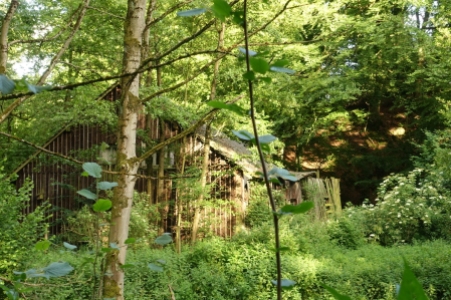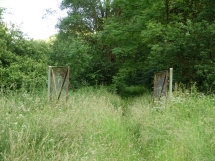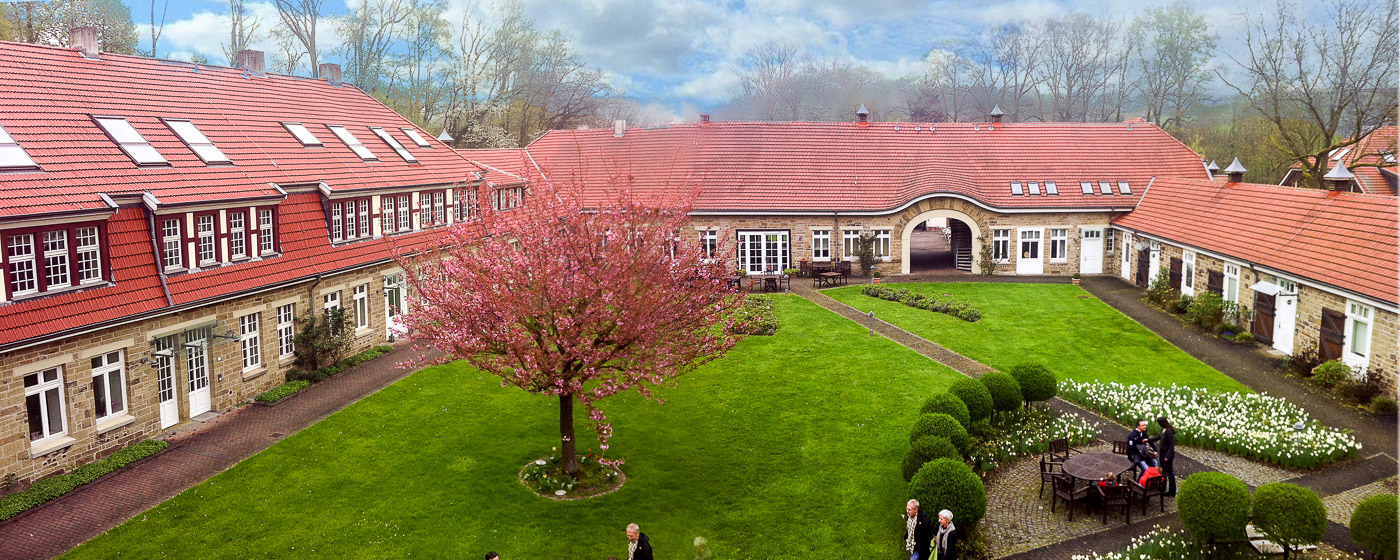I live on the Brunnenstraße (Well Street) in Düsseldorf. I didn’t even choose this place, a professor’s assistant picked it out for me to live in when I began teaching at the local university. It was only supposed to be temporary, but as soon as I settled in, I began falling in love with my hood. The Brunnenstraße is just south of the most concentrated area of Düsseldorf, but insulated because of its odd curving shape and narrow dimensions. When I moved in, it was fairly down-at-heel, with an odd selection of shops: organic food, used ladies’ shoes, a gold buyer (“Your gold teeth are cash!”), a video rental shop with an extensive “over 18” section, a pharmacy, a few pubs, etc.
Over the years, the street has gotten trendier, as the relatively cheap rents (by Düsseldorf standards) and central location have drawn hipsters and artists. Yet many of the funky old shops and bodegas remain — there’s even an Iranian culture center — cheek-by-jowl with street art galleries and yoga studios. It’s a lively mix, which has emerged organically. There’s always something going on in the Brunnenstraße, and you definitely get to know your neighbor.
Now this small gem of a neighborhood has gotten its own profile, in The Dorf, a local magazine which keeps tabs on what’s on in this city. This whole issue is written in English. I’ve copied the whole article from the print issue, by Anne Florack. The photos are by Robin Hartschen. Enjoy!
:::::::::::::::::::::::::
Urban Cosiness
Supermarkets, petrol stations and the traffic threading out of the city — take a moment and leave it all behind simply by standing on the crossing under which the stream Dussel babbles along until it disappears inside a little tunnel. “Have a slice of Gugelhupf with that,” the flower shop seller tells his customer, who has just bought a red rose, and wraps the piece of cake in aluminum foil to hand it to him with a smile. “Grandma’s recipe,” he adds. His shop on the little crossing over the stream sells bouquets every day until dusk falls. The magic of Brunnenstraße in the district of Bilk starts to unfold at this point. The high speed of the city begins to drop off and turns into the gentle pace of ‘urban cosiness’.

Brunnenstraße was named on March 15, 1894. It led to the newly built municipal
waterworks in Flehe, where the first well (“Brunnen”) had become operational
in 1870. The street stretches for 470 metres between Ludwig-Hammers-Platz and Bilk’s Suitbertusstraße. The ‘uneven’ house numbers on one side go from 1 to 75 and the ‘even’ ones on the other from 2 to 62. This year it became a 30 km/h zone, which local residents and shops have been advocating for since 2017.

Wandering along the clearly laid out street you can feel the sound of speeding cars ebbing away, whilst the rumble and the bells of the trams becomes more pronounced. You notice the independent shops lining both sides of the street, want to follow the smell of sweet popcorn into the Metropol, Düsseldorf’s oldest arthouse cinema (established 1940) to watch independent classics, sip an Americano in the Cafe Süße Erinnerung, have a
snack of roasted nuts at Laikon, buy a magazine in the Markthalle, try Cantonese bites at Dim Sum Gourmet or enjoy a scoop of ice cream at Herrtotti.

Marcel Clemens, who for the past two years has been running the zero waste shop Pure Note with his wife Nubia Osorio Torres, enthuses about the fabric of the local neighbourhood: “We recommend each other’s shops and do not feel that this leads to one shop taking away from the other. By collecting ideas for the future and working well together, we enrich each other.” The plants that they ‘inherited’ from their former neighbour Mario Comune demonstrate this sense of unity — when Caffe Enuma had to close last spring, Mario left Marcel and Nubia all his plants, which they used to turn
the back yard of the zero waste shop into a leafy oasis.

The sense of solidarity is also felt by Volker Rohde, who offers audio delicacies for vinyl lovers at Heimindustrie Records. He shares the premises with the artist Heiko Beck Kos, who has become known through his art installations in public spaces.
After browsing the records one can take a break right next door. At The Funky Deli, Fehmi continues to breathe life and vibes into this social hot spot in the evenings. Every Friday and Saturday after dinner DJs spin great times at the Deli’s own mixing desk.
And then, at some point, you are bound to bump into Haru Specks. Dusseldorf’s very own ‘vinyl preacher’ is part of the fabric of the Brunnenstraße. He is not known to stick to one haunt only, so wherever he shows up he is welcome — as guest or behind the turntables. “I feel welcome wherever I go, people here mingle and complement each other — it’s like a modern Agora.” And he is right— even if you arrive alone, you are never lonely here.

Strolling through this down-to-earth area the numerous luminous signs, that have long stopped flickering, pull your gaze towards the sky. Apart from that many marvels can be found at eye level. Residents and shop owners wistfully remember the horse head carved of stone, which used to decorate the cream-coloured facade of house no. 27 for many years. The walls of the building used to conceal Anton Schmalscheidt’s haulage company,
who in the pre-automobile times of the 19th century used horse carriages to serve the high number of paper plants located in Bilk. Demos and protests could not save the building with the horse’s head from being demolished though. Presently it is being developed into modern flats for students. Only the back yard will remain witness to the history of the building.

The unique street is also a kind of island for urban art. The curator Klaus Rosskothen runs the gallery Pretty Portal at house no. 12, Dusseldorf’s top address for urban art. It’s not a coincidence therefore, that the walls, the backs of the street signs and the electricity boxes of the building have been turned into art by Ardif and FinDAC, sport PDOT’s widely known Pac-Man ghosts and also sticker art and paste-ups by regional and international street artists. Brunnenstraße has one thing in common with urban art — they blossom in the shadows. And thus reflect the thoughts and sentiments of our times.

Such a current sentiment is that of sustainability — whether in shape of zero waste shops like Pure Note, the carefully selected eco-fashion available at Yavana, run by Margarete who opened her shop here over ten years ago, the expert advice when buying plants at Love your Plants or the new vintage shop Strike, which has been attracting TikTok-teens and -tweens into the area since it opened.
The iconic pub Tigges and the 35 year old, legendary travel outfitter Sack & Pack mark the end of the groovy interlude between the thundering sounds of the rushing city. There roars the Bilk train station, behind that the Dusseldorf Arcaden shopping centre rises, accelerating everything back to the high speed of the metropolis. In order to get away from it all, you pass through many places. Brunnenstraße, however, is a place you want to stop in, it is where you can escape the transience of the city. It gives you a hand and pulls you up into a space where you can dawdle, catch up and linger, a sanctuary half a kilometre long. As cool as possible, as cosy as necessary.















































 The oldest parts of the historically-protected complex date to 1460, and it was most recently expanded into a stable in 1915. After the stables closed, the area was
The oldest parts of the historically-protected complex date to 1460, and it was most recently expanded into a stable in 1915. After the stables closed, the area was 




